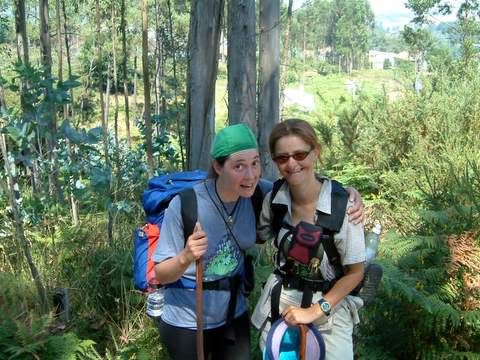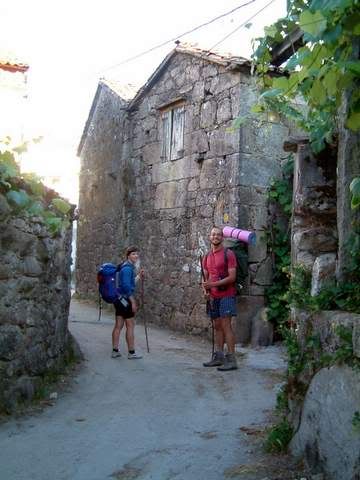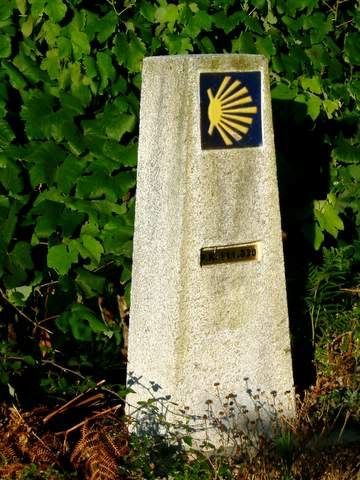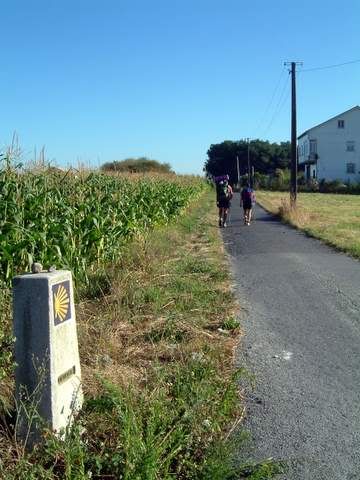What is this pilgrimage walking?
In 2002, I, Tracey walked the "Camino de Santiago" - an old pilgrimage walk through the north of Spain, that has existed for hundreds of years. The walk ends in Santiago de Compestela, where it is believed the remains of St James (the brother of Jesus) is today (you can view the crypt in the cathedral). 
Today this walk is walked by thousands of people, worldwide. People do their 'pilgrimage' for spiritual reasons, social reasons, perseverence reasons, whatever. Everyone has their own story on the camino. 
The most popular pilgrim is the "French Camino" that starts in Le Pruy in France. One walks over the Alps, from France, into Spain. The end of camino is Santiago de Compestela. The most beautiful city with an amazing cathederal, where apparantly James, the brother of Jesus was buried.
The word camino, is Spanish for "I walk" or "the way", "the path". Pilgrims used to carry a shell to use for drinking water from and had their faithful walking stick. They would stay in monasteries, nuneries, churches as they walked their pilgrim.

Along the walk, one follows yellow painted arrows, or a yellow shell, to indicate the way to go. You walk through farm lands, forests, side paths, mountain paths and sometimes roads, along your walk.


Specifically for the pilgrim, one can stay in albergues or refugios along the way. These are normally building with dormitory rooms, which can be municipal buildings, nuneries, monestaries, all sorts of buildings. I've even stayed in a firestation, which was the refugio in the town.
 >
>A pilgrim picks up a "crediential" along the route. As one enters towns or stays in rufigios - the person in charge will stamp your crediential. This is proof that you have walked the camino and it gives you access to be able to stay in the refugios and albergues. When you get to Santiago, you then qualify to get a Pilgrim certificate.

On my walk in 2002 I walked 3 paths.
1. French Camino: Leon to Santiago de Compestela
2. Santiago de Compestala to Finnesterre - which was known then as the end of the world
3. Portugese Camino: Braga, in Portugal, to Santiago de Compestala, in Spain.

